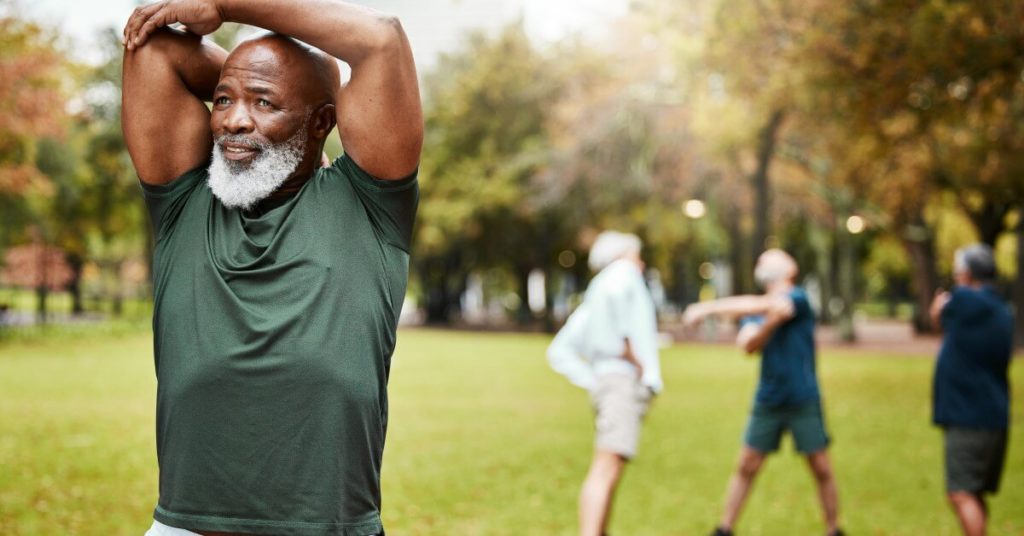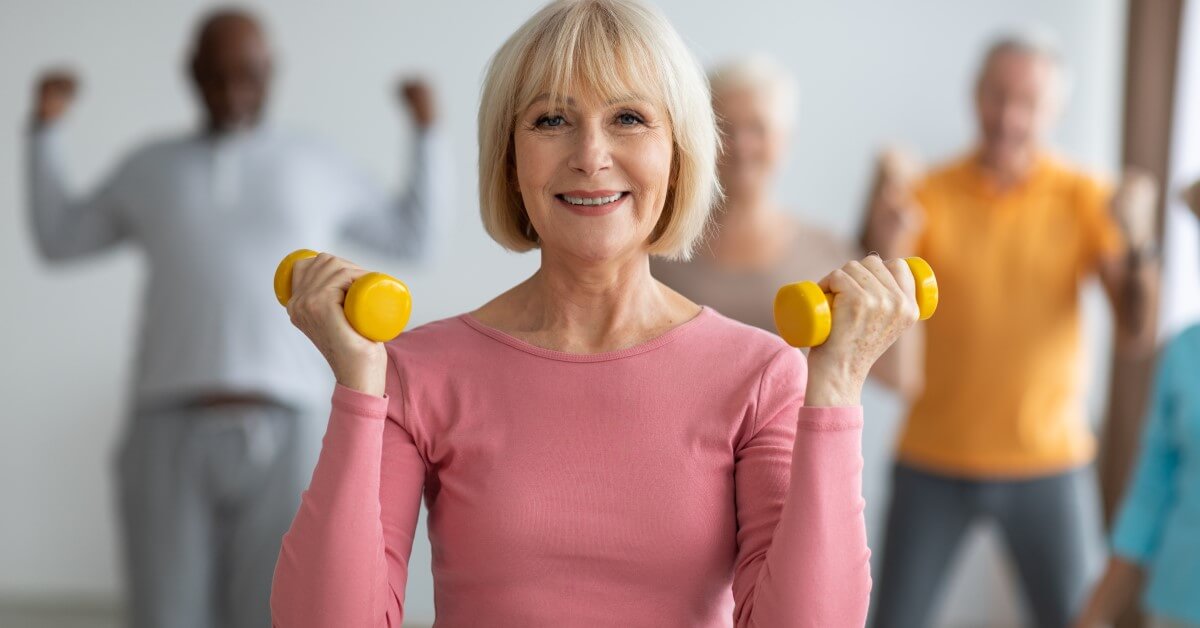
Why Do We Age? | 10 Steps to Age Well | What’s the Takeaway?
Overview
Aging has a bad reputation. In Western society, aging is synonymous with physical and mental decline, a growing reliance on outside help, and potential loss of independence, all while the clock is ticking louder and louder.
However, growing older comes with significant benefits. Confidence, wisdom, more patience, and a lot of experience should get equal billing to the gray hairs and wrinkles we are told are less than appealing. But for most people, each passing birthday is less of a cause for celebration than the previous one. It’s time to change that attitude.
There is a multitude of factors that goes into healthy aging. Changes come with every stage of a person’s life, but there are some special considerations to be given to enjoying robust health well into our older years.
More than anything else, the key to aging well is to start taking good care of your health as early as possible and to retain good habits for life.
Why Do We Age?
There are many theories why we age and eventually die, including predetermined maximum cellular lifespan, reduction in essential types of protective proteins, free radical theory, or the wear and tear theory that our bodies age and die by slowly using up all of their limited capabilities.[1]
So, let’s start this list by getting one unchangeable fact out of the way: we won’t live forever. That is certain, even if the specific causes of aging on a cellular level are not fully understood.
Familial predisposition is something real and something that should be noted, with genetic factors being unchangeable (at least, at this time).
There are genetic markers in families that can determine whether you have higher chances of developing certain chronic conditions such as high blood pressure or cholesterol. However, lifestyle factors can still be changed to make the issue easier to manage or even avoided.
10 Steps to Age Well
It’s possible to slow down some of the less desirable physical and mental changes that come with aging and live a longer, happier life focusing on what can be controlled – and there’s a lot!
1) Eat Yourself Healthy
You’ve heard it before – eat your vegetables. Don’t be afraid of fruits, either. Both are rich in antioxidants and boost the immune system, which tends to decline as we age, often leaving us more susceptible to infection. For many people, switching to the Mediterranean diet works great, consisting of fish, monounsaturated fats from olive oil, fruits, vegetables, whole grains, legumes/nuts, and a minimal intake of meats and eggs. This diet has been well-studied and can offer protection against many health dangers, such as cardiovascular disease, diabetes, and cancer.[2]
2) Don’t Stop Moving
Exercise is a fun and effective way to naturally maintain physical and cognitive fitness at any stage in life.[3] The Centers for Disease Control and Prevention (CDC) recommends at least 150 to 300 minutes a week of moderate-intensity or 75 to 150 minutes of vigorous aerobic activity or an equivalent combination of moderate- and vigorous-intensity aerobic activity.
Exercise could mean a brisk walk in nice weather, a bike ride, recreational swimming, or tennis, 30 minutes per day/five days a week. Also, remember resistance exercises: weightlifting or bodyweight exercises work to build and hold onto muscle which is a crucial factor for maintaining your mobility. Aim for at least two resistance exercises per week. Try yoga for flexibility as well.
3) Mental Wellness
Much like physical exercise, mental wellness is a worthwhile area of focus at any age, but it becomes even more critical as we age and changes related to the passage of time occur. Social isolation is an unfortunate reality for many seniors. It can set in due to the death of a spouse, family separation, or mobility issues that may leave some people unable to go outside as often as before. Loneliness can lead to cardiovascular issues, lowered immunity, depression, stroke, hypertension, and increased cognitive deterioration, such as Alzheimer’s.[4] Volunteering, staying in touch with family and friends, or even adopting a pet can all help. Peer support groups are also an effective, well-researched way to alleviate isolation and loneliness.[5]
4) Family Health History
It’s important to know one’s family health history to allow for preventive care and risk reduction.[6] Make your doctor aware of known health conditions that run in your family. Appropriate screening and periodic testing could often mean a favorable outcome.
5) Routine Medical Checkups: Knowledge is power. Like sharing family health history, periodic health examinations (such as an annual checkup) are essential to identify risk factors and any early signs of disease and prevent future illness by timely intervention.[7] The frequency of these visits is primarily determined by your current state of health and any known conditions.
6) Smoking
The adverse effects of cigarette smoke on human health are widely recognized. Besides being a well-known agent of cancer and cardiovascular diseases, smoking tobacco causes premature aging of the skin.[8] There are many ways to kick the nicotine addiction. Nicotine replacement therapies that wean you off the habit (patches, gum, sprays), prescription medications, support treatments, and even quitting cold turkey can all help.
7) Easy on the Booze
Older drinkers are more sensitive to alcohol’s effects on memory, coordination, reaction time, and driving. In contrast, heavy alcohol consumption increases the risk of cancer, liver disease, and cardiovascular disease.[9] Some medications can interact negatively with alcohol, so it’s always a good idea to check with your doctor. The best idea is to keep the intake of alcohol to a minimum or stop altogether. If you find this challenging, you may be dealing with an addiction. Please speak to a healthcare professional.
8) Sleep Well
Sleep is vital for cardiovascular health, metabolism, immunity, and cognitive functions. However, as we get older, we tend to sleep less. Insomnia is quite common in older adults, with over half of this demographic reporting sleep problems.[10] Practicing good sleep hygiene will go a long way in helping you fall and stay asleep. Stick to a regular sleep-wake cycle every day, keep your bedroom cool and dark, avoid heavy or spicy foods as well as alcohol close to bedtime, avoid daytime naps, and quit any stimulating electronics like tablets or smartphones before bed as well. If you still have trouble sleeping, speak with your doctor to see if other options, such as Cognitive Behavioral Therapy for Insomnia (CBT-I), may be a treatment option.
9) The Brain Game
Just as physical exercise is a great way to remain healthy and mobile for a long time, so is exercising the brain. Studies have shown that recreational mental stimulation such as Sudoku or word puzzles can delay and even reduce cognitive decline at any age.[11]
10) Sunscreen
Another one that is important to remember and use at any age, but particularly so as we get older. Long-term exposure to the sun’s UV rays causes premature skin aging, including more wrinkles, altered pigmentation, and loss of skin tone.[12] So, remember to use sunscreen when going outside – even on cloudy days. Sun exposure is a natural way to absorb more Vitamin D, which diminishes with age.
What’s the Takeaway?
Aging is inevitable and evolutionarily necessary in the broader term. People have yet to discover how to stop the clock. However, thanks to advances in our knowledge of aging processes, there is a lot we can do on an individual basis to give ourselves the best chance at moving forward healthily.
Lifestyle factors can hugely influence how we lead our lives through all of its stages. Use the tips above and make them part of your life right now – no matter what your current age, and walk (or jog) into the future with confidence and better health.
References:
- Viña, J., Borrás, C., & Miquel, J. (2007). Theories of ageing. IUBMB life, 59(4-5), 249–254. https://doi.org/10.1080/15216540601178067
- Widmer, R. J., Flammer, A. J., Lerman, L. O., & Lerman, A. (2015). The Mediterranean diet, its components, and cardiovascular disease. The American journal of medicine, 128(3), 229–238. https://doi.org/10.1016/j.amjmed.2014.10.014
- Bielak, A. A., Cherbuin, N., Bunce, D., & Anstey, K. J. (2014). Preserved differentiation between physical activity and cognitive performance across young, middle, and older adulthood over 8 years. The journals of gerontology. Series B, Psychological sciences and social sciences, 69(4), 523–532. https://doi.org/10.1093/geronb/gbu016
- Yanguas, J., Pinazo-Henandis, S., & Tarazona-Santabalbina, F. J. (2018). The complexity of loneliness. Acta bio-medica : Atenei Parmensis, 89(2), 302–314. https://doi.org/10.23750/abm.v89i2.7404
- Pitkala, K. H., Routasalo, P., Kautiainen, H., & Tilvis, R. S. (2009). Effects of psychosocial group rehabilitation on health, use of health care services, and mortality of older persons suffering from loneliness: a randomized, controlled trial. The journals of gerontology. Series A, Biological sciences and medical sciences, 64(7), 792–800. https://doi.org/10.1093/gerona/glp011
- Madhavan, S., Bullis, E., Myers, R., Zhou, C. J., Cai, E. M., Sharma, A., Bhatia, S., Orlando, L. A., & Haga, S. B. (2019). Awareness of family health history in a predominantly young adult population. PloS one, 14(10), e0224283. https://doi.org/10.1371/journal.pone.0224283
- Virgini, V., Meindl-Fridez, C., Battegay, E., & Zimmerli, L. U. (2015). Check-up examination: recommendations in adults. Swiss medical weekly, 145, w14075. https://doi.org/10.4414/smw.2015.14075
- Morita A. (2007). Tobacco smoke causes premature skin aging. Journal of dermatological science, 48(3), 169–175. https://doi.org/10.1016/j.jdermsci.2007.06.015
- White, A. M., Orosz, A., Powell, P. A., & Koob, G. F. (2023). Alcohol and aging – An area of increasing concern. Alcohol (Fayetteville, N.Y.), 107, 19–27. https://doi.org/10.1016/j.alcohol.2022.07.005.
- Neikrug, A. B., & Ancoli-Israel, S. (2010). Sleep disorders in the older adult – a mini-review. Gerontology, 56(2), 181–189. https://doi.org/10.1159/000236900Becker, G. J. (2005). The national institute of general medical sciences. Journal of the American College of Radiology: JACR, 2(9), 790–792. https://doi.org/10.1016/j.jacr.2005.06.001
- Litwin, H., Schwartz, E., & Damri, N. (2017). Cognitively Stimulating Leisure Activity and Subsequent Cognitive Function: A SHARE-based Analysis. The Gerontologist, 57(5), 940–948. https://doi.org/10.1093/geront/gnw084
- Fisher, G. J., Wang, Z. Q., Datta, S. C., Varani, J., Kang, S., & Voorhees, J. J. (1997). Pathophysiology of premature skin aging induced by ultraviolet light. The New England journal of medicine, 337(20), 1419–1428. https://doi.org/10.1056/NEJM199711133372003


